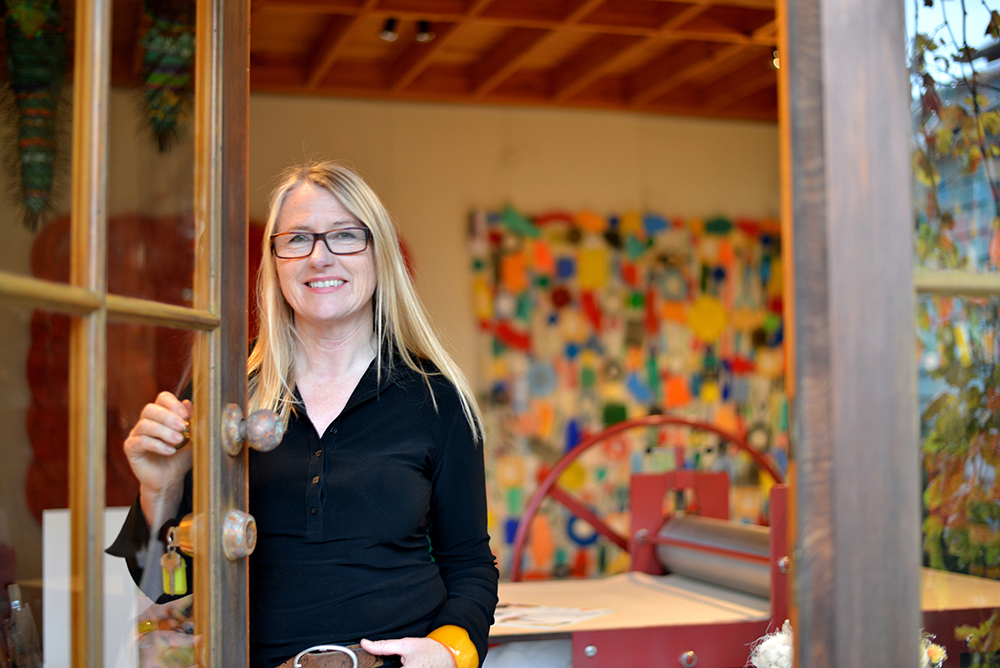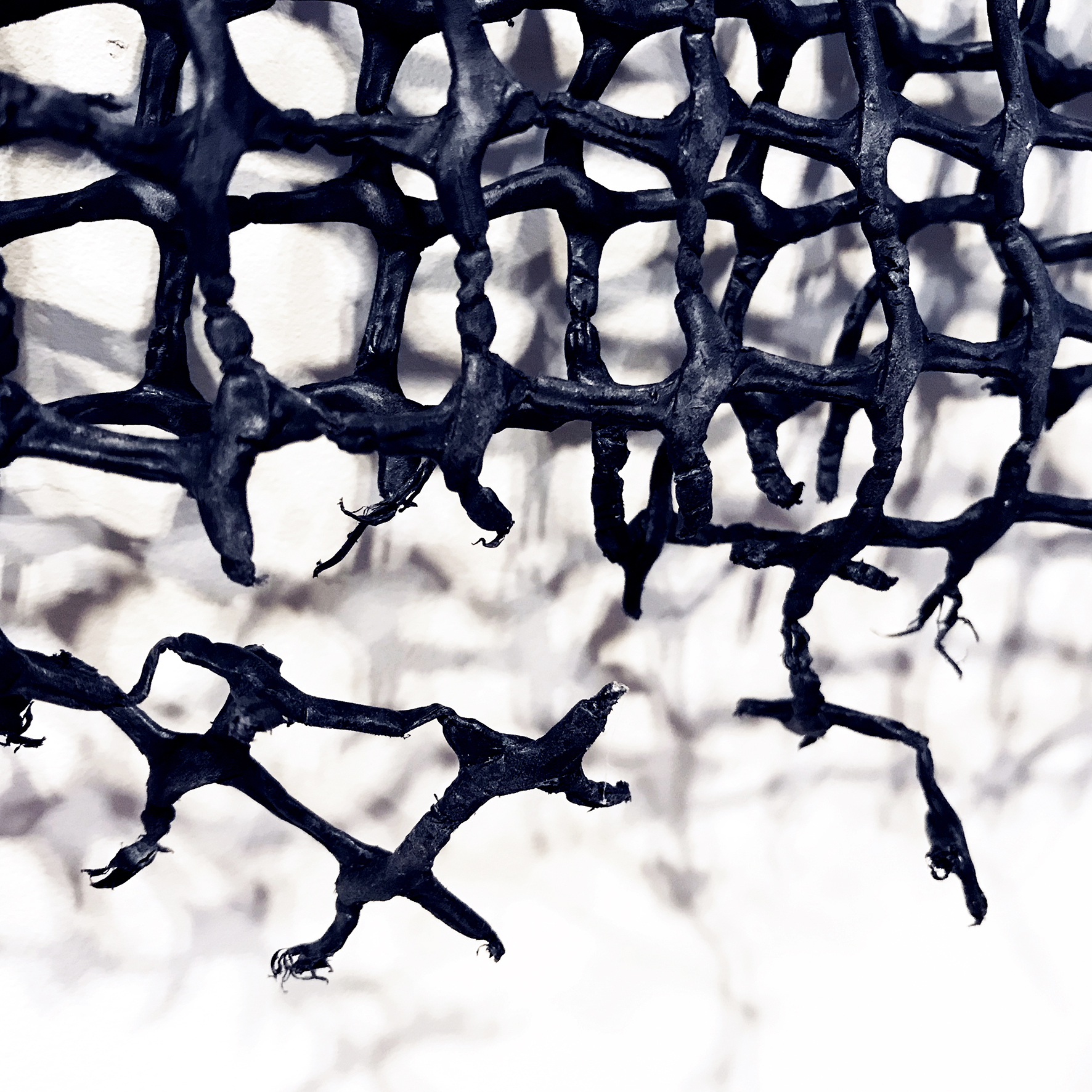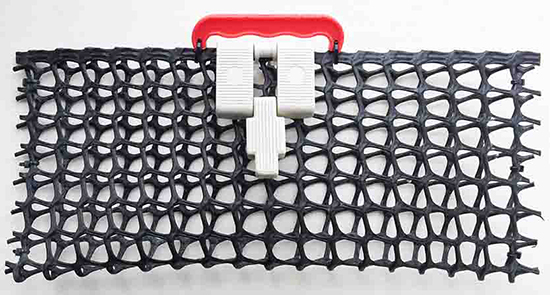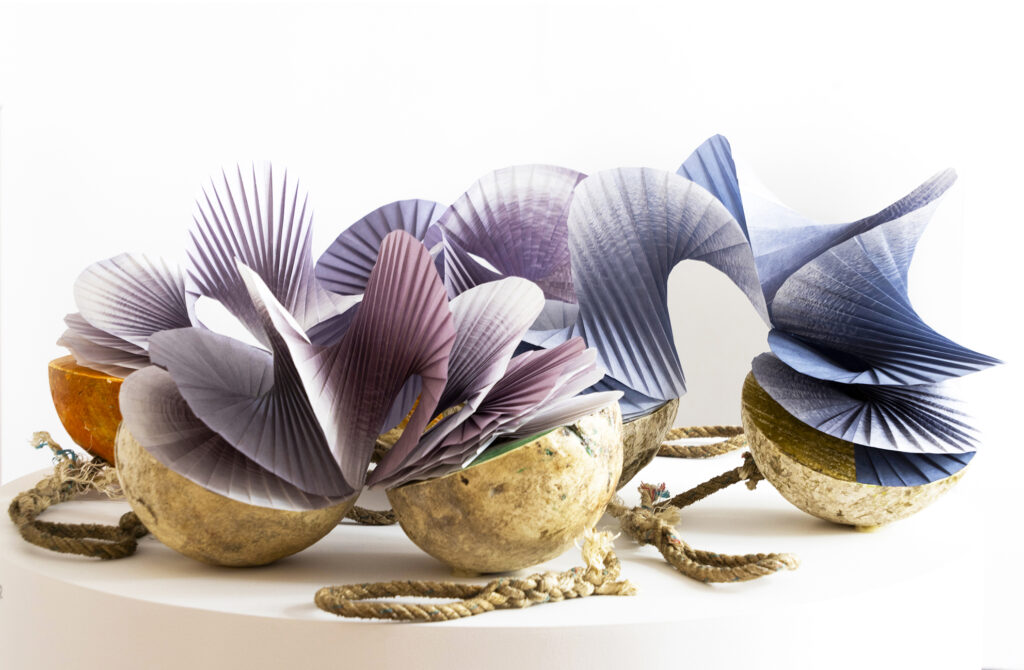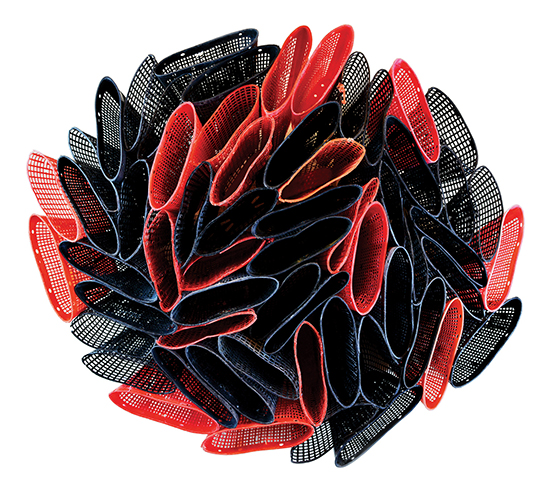
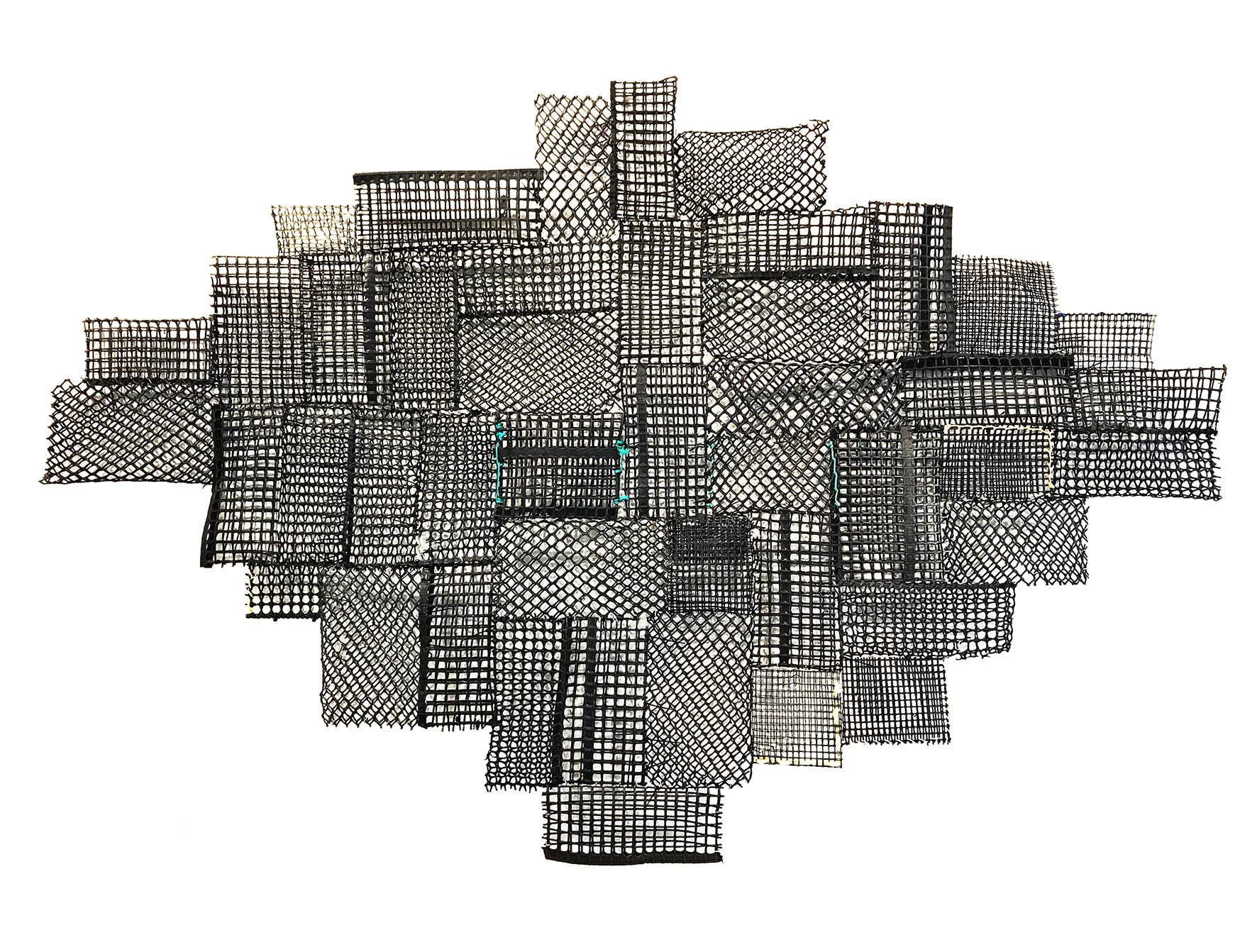
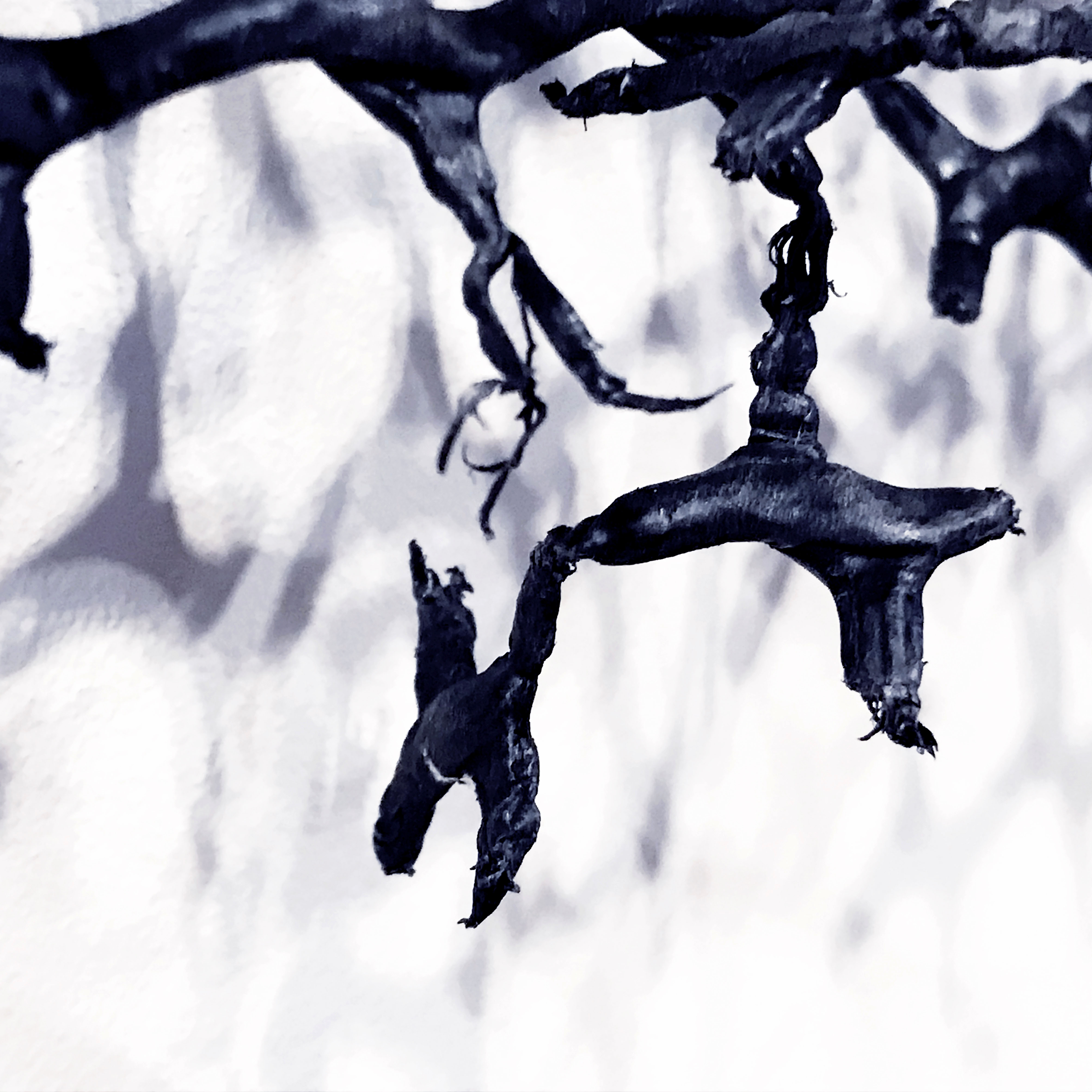
From top:
Studio portrait of Carmel Wallace. Photography by Amy Tsilemanis
Carmel Wallace, Cluster, 2019, plastic burley baskets, cable-ties, wire mesh 95 x 100 x 27 cm
Carmel Wallace, Fragmented 1, 2020, pigment print, 80 x 80 cm
Carmel Wallace, Designer Burley Basket 15, 2018, plastic burley basket, handle, object 16.5 x 35 x 9.5 cm
Carmel Wallace, Overlay, 2020, burley baskets, cable-ties, 160 x 238 x 10 cm
Carmel Wallace, Fragmented 4, 2020, pigment print, 40 x 40 cm
Q: What were some of the foundation ideas you began with when embarking on this exhibition project?
My home environment of south-west Victoria is an important reference point. For many years I’ve walked its spectacular wild beaches and gathered washed-up objects from its tide-lines. What I collect tells me a lot, not only about this particular place but also about the greater world environment that produces much of the waste that circulates in the ocean currents before ending up on these beaches. Though industrial in origin, time and natural processes are embodied in these weathered, sea-sculptured materials and in the artworks I create from them. They have become my pallet. The challenge is to work them into images and forms that are meaningful in the context and language of contemporary art.
Climate change is the crisis of our time. Oceans and their ecosystems are vital in maintaining a stable-climate but their degradation is largely out-of-sight and dangerously out-of-mind. Fishing is a major source of livelihood for many coastal communities. It is also a commercial activity undertaken on a massive scale by high-tech factory ships, an activity wreaking havoc on marine ecology around the globe with estimates of up to ninety per cent of wild stocks being over-fished or fully exploited. In addition, so much marine debris is fishing-related. Where once biodegradable materials such as willow, bamboo, and hemp were used to make cray-pots, burley-baskets, nets and ropes, now all is plastic. Under the stresses of ocean storms and currents not only do fishing-ropes and nets break loose and entrap marine-life, but the plastics break up and enter the food chain at all levels, killing seabirds and marine life in the process.
Q: How did the artwork selection take place?
I decided to use this exhibition as an opportunity to hone in on the materiality of the fishing industry in this context. Using some of my existing works as starting points, I developed ideas and experimented with forms and images incorporating fishing-related beach-found materials. Artworks were selected to complement and interact with each other and encourage a nuanced, layered reading in a visually rich atmosphere.
Q: How does the exhibition manifest – what do visitors experience?
Three of my large outdoor sculptures – Marine Totems – mark the entrance to the High Tide exhibition. The selection of prints, sculpture and assemblage works are mostly new pieces extending a number of on-going series. Immediately inside the gallery visitors will be faced with a large format print from the Fragmented series. Further into the main gallery the remainder of this print series will be viewed in the company of related 3D works: some singular large pieces, others composed of multiple smaller component pieces brought together to form a multi-faceted installation.
Q: What are some of the key works and what subject matter do they deal with?
On reviewing my work for this exhibition, it was revealing to see the impact of the devastating bushfires that engulfed so much of Australia and raged at the time I was creating some of the final key pieces. The tone of my work changed and this is perhaps best illustrated in the development of the various series incorporating plastic burley baskets. In fishing, these baskets hold bait and attract fish. I’ve collected hundreds along the tidelines of southwest Victoria. Often, I pick them up on my beach walks, fashion a handle from found fishing rope, and use them to carry back smaller pieces of washed-up plastic. This led to my rather playful Designer Burley Basket series begun in 2017. Then, with sea-forms and reefs in mind, I developed the large Cluster works last year.
More recently the symbolism of the geometric forms and grids of the baskets came to the fore and the black cross of Overlay appeared without my consciously determining it. Finally, as the bushfires progressed, I developed a major print series, Fragmented, using imagery inspired by black, weathered, ocean-distressed burley baskets. The grid construction of the baskets has become distorted, torn, in the process of disintegration, as if nature is protesting humanity’s cartesian imposition and tearing it asunder. The blue-black forms with their ghostly shadows impart quite an elegiac resonance. Though my exhibition as a whole is by no means sombre, it is these prints that sum up the sense despair I have been feeling in the face of escalating environmental losses.
—
High Tide is at Qdos Fine Art, 36 Allenvale Road, Lorne, 8-28 March

